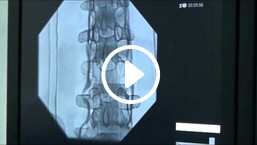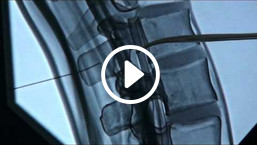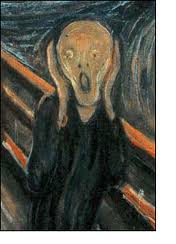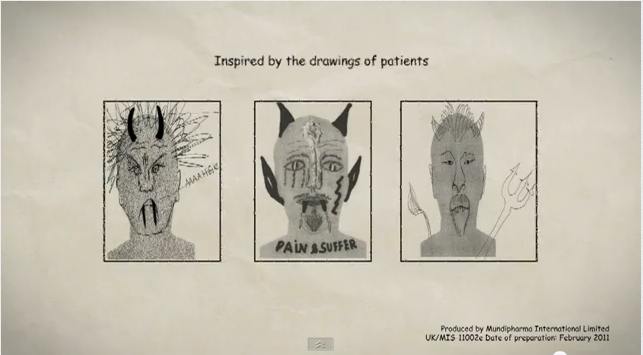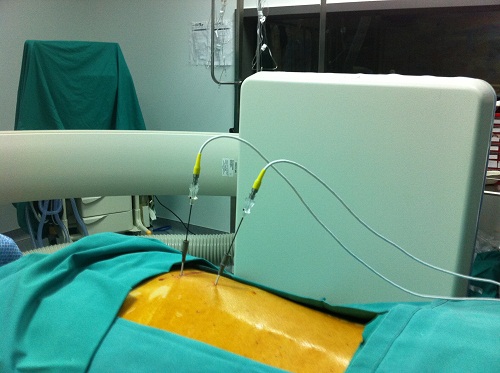Chronic pain is a complex condition which, irrespective of its aetiology, constitutes a separate medical entity on its own. According to the American Pain Institute, approximately 42-50 million Americans suffer from chronic pain.
Despite the numerous trials that have been conducted costing many millions dollars, the pathophysiology (induction mechanism) of chronic pain is still not clear.
Pharmacotherapies that are prescribed help only about 58% of patients. Neither can invasive therapies ensure a definite and permanent therapeutic result in 100% of patients.
MOST COMMON CAUSES OF CHRONIC PAIN
- Low back pain (lumbago)
- Sciatica
- Headache
- Arthritis and particularly osteoarthritis
- Fibromyalgia
- Neuropathic pain
- Cancer pain
Treating the underlying cause of pain is certainly very important but does not always cure chronic pain. In some cases the chronic pain aetiology is unknown.
In general, a realistic target of chronic pain treatment is to significantly reduce pain and improve the patient’s ability to carry out physical activities, achieving in this way a better quality of life.
The absolute elimination of pain following a brief pharmaceutical treatment or applying a minimally invasive pain therapy or a surgical operation, is rather an unrealistic expectation.
In most cases chronic pain requires chronic therapy, as happens with all other chronic medical conditions, such as arterial blood pressure, diabetes mellitus, heart diseases etc requiring lifelong therapy.
 EFFECT OF PSYCHOLOGY ON CHRONIC PAIN
EFFECT OF PSYCHOLOGY ON CHRONIC PAIN
There is no doubt that negative emotions, such as pessimism, disappointment, stress, sadness and depression, aggravate chronic pain. Individuals who are ruled by such emotions, abandon their effort to improve their quality of life and respond less to therapies. On the other hand, individuals who maintain a more optimistic and positive attitude to their problem, manage to cope with it with higher success.
So, treating chronic pain is somehow a continuous struggle by the patient, and there is no doubt that his/her psychology plays a major role in the ultimate outcome.
A multi-factorial approach to the problem is needed in order for the patient to maintain a positive psychology.
Drugs, psychotherapy, relaxation techniques and support by relatives and friends, all play a major role in keeping up the patient’s psychology.
 DRUGS ADMINISTERED FOR THE TREATMENT OF CHRONIC PAIN
DRUGS ADMINISTERED FOR THE TREATMENT OF CHRONIC PAIN
There are various categories of prescribed and non-prescribed drugs used to treat chronic pain, administered either as monotherapy or combination therapy.
- Simple analgesics. Many patients are relieved by taking simple analgesics (paracetamol, non-steroid anti-infllammatory drugs, like aspirin, ibuprofen, naproxen etc). Some of these, like naproxen, do not require medical prescription.
Drugs of this group are generally considered to be quite safe, but they are not totally without risk. For example, excessive paracetamol use may cause acute liver failure, particularly in patients already suffering from liver disease. Anti-inflammatory drugs used by patients with heart disease may cause severe cardiological complication.
- Dermal patches (capsaicin patch, lidocain patch etc)
- Αntidepressants Drugs of this category that are approved by the American Food and Drug Administration (FDA) for depression, are prescribed by physicians also for the treatment of chronic pain.
Tricyclic antidepressants The analgesic result is independent of the drug effect on the patient’s psychology and drugs of this group are administered also to patients who are in pain without having depression. Such drugs are amitriptylin (Saroten) and chlorimipramin (Anafranil).
B) Serotonin Norepinephrin Reuptake Inhibitors (SNRIs) Such drugs are venlafaxine (Efexor etc) and duloxetin (Cymbalta) that have been approved by FDA for the treatment of fibromyalgia and neuropathic pain. They have similar efficacy to tricyclic antidepressants but present fewer side-effects. When administered in the proper doses and under the physician’s follow-up, they constitute a very good therapeutic option for chronic pain.
- Αntiepileptics. These are used in the treatment of epilepsy but are also prescribed for chronic, mainly neuropathic, pain. Such drugs are: carbamazepin (Tegretol), which is the first line drug for trigeminal neuralgia; gabapentin (Neurontin) and pregabalin (Lyrica) for neuropathic pain, the latter being approved by FDA.
- Οpioids . Codein, tramadol, tapentadol, morphin, fentanyl can be very effective drugs in the treatment of chronic resistant, both benign and malignant, pain. They are provided by different routes of administration (orally, rectally, percutaneously, subcutaneously, intravenously, intranasally, epidurally, subarachnoidally etc). Opioids may have serious side-effects but, when administered with caution in the proper dosages by patients who cannot find relief in any other way, they are absolutely indicated and improve quality of life.
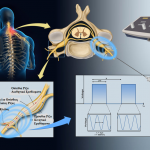 NON-PHARMACEUTICAL THERAPIES FOR CHRONIC PAIN
NON-PHARMACEUTICAL THERAPIES FOR CHRONIC PAIN
Minimally invasive pain therapies. These are specially designed techniques applied under local anaesthesia and fluoroscopic guidance, used for the diagnosis and treatment of chronic pain (transforaminal epidural injection, neuroplasty, kyphoplasty, radiofrequency facet joint denervation etc).
 Alternative therapy Alternative therapies include acupuncture, chiropractic, massage, yoga, siatsu, reflexology, osteopathic manipulative treatment etc.
Alternative therapy Alternative therapies include acupuncture, chiropractic, massage, yoga, siatsu, reflexology, osteopathic manipulative treatment etc.
- Exercise. Swimming, cycling, walking, light jogging and stretching exercises for muscles and joints can help to maintain a good physical condition without burdening the patient’s musculoskeletal system.
- Physicotherapy. Physicotherapy, in combination with exercising, can contribute to improving motion and performing physical activities with less pain.
- Psychological Consultation
- Nutrition. Proper nutrition plays a highly significant role in maintaining good physical condition and well-being.
THERAPY OF CHOICE
Chronic pain treatment is A multi-factorial and individualised process for every patient, depending on his/her medical history, origin of pain and temperament.
Discuss with your physician in order to decide together on the treatment that is most appropriate for you. Most of the times this treatment is a combination therapy.


